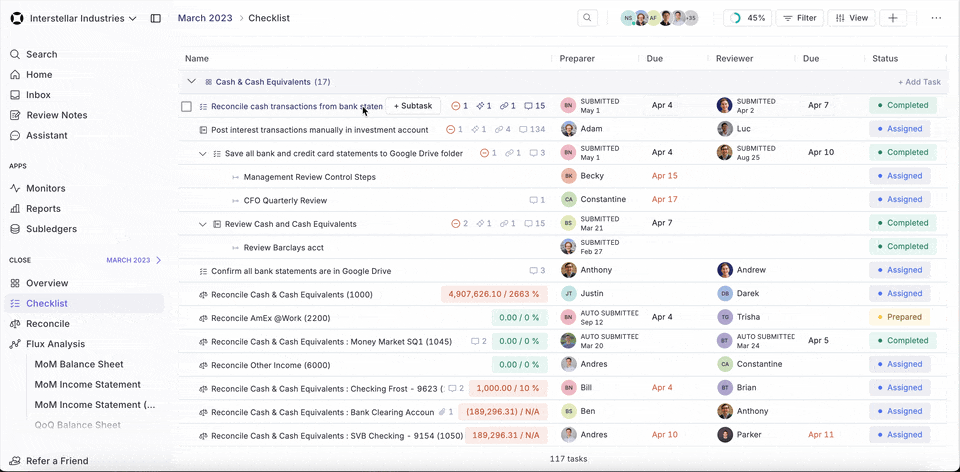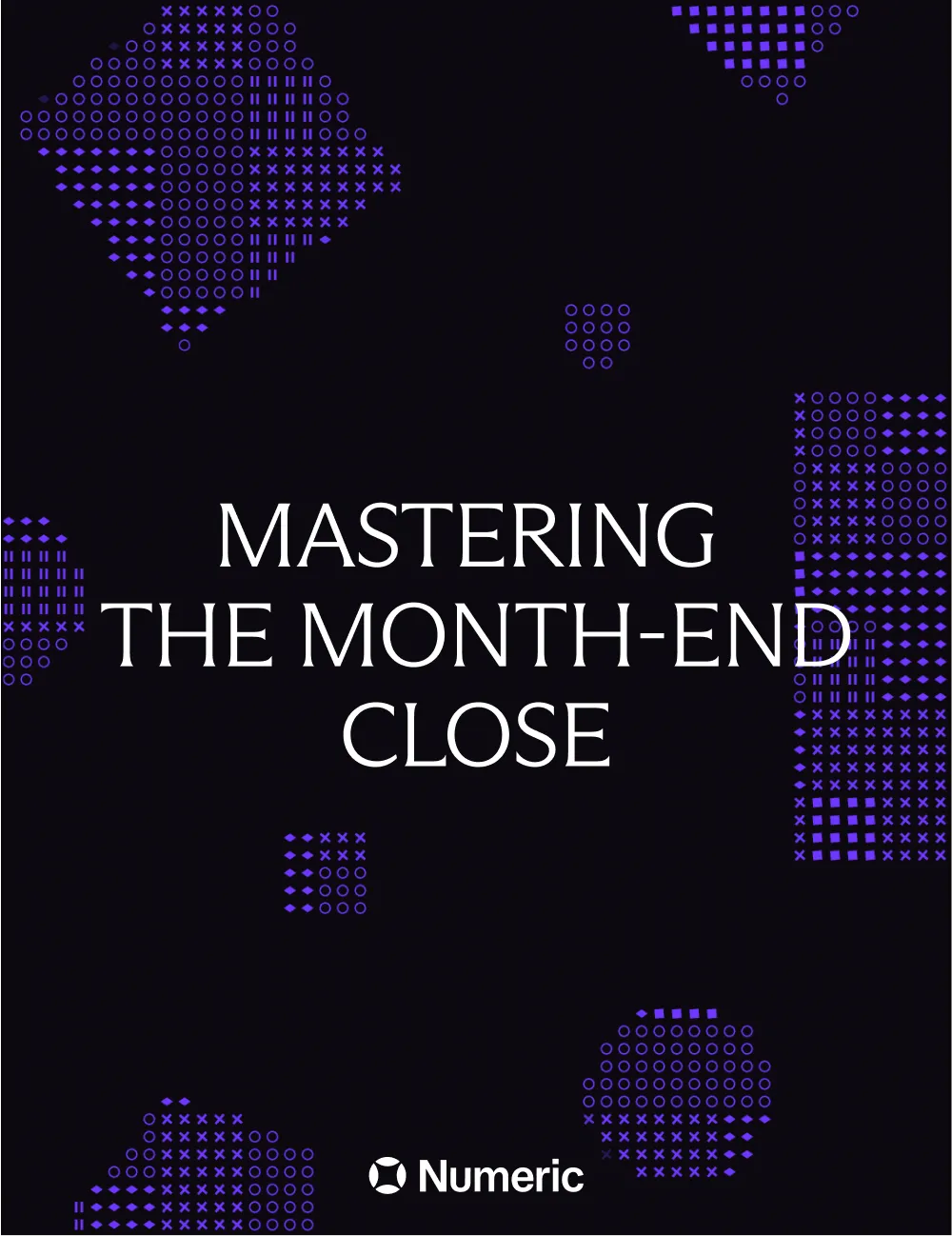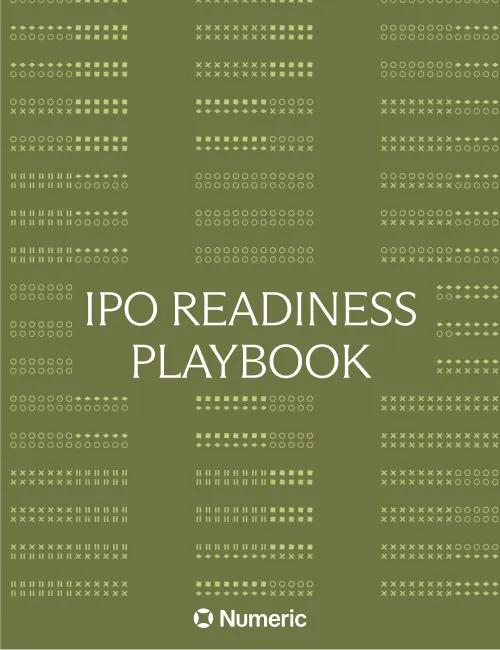The Controller's Playbook: Mastering P&L Management for Strategic Impact
.webp)
The difference between high-performing finance teams and those merely keeping up can often come down to a few critical capabilities: one of which is effective P&L management.
Every line on your profit and loss statement tells a story — revealing growth opportunities, highlighting cost inefficiencies, or exposing missed revenue potential. Transforming these numbers into strategic insights requires streamlined processes, real-time visibility, and the ability to adapt to increasing complexity.
For controllers, finance leaders, and business owners, mastering P&L management is essential for driving business growth and maintaining a competitive advantage. Let's explore how you can turn this core responsibility into your team's strategic superpower.
Beyond the Numbers: What Makes P&L Management Strategic?
P&L management connects financial performance to business strategy. Traditional approaches often focus solely on recording transactions and reconciling accounts, but strategic P&L management uses financial data to identify opportunities and inform decision-making for both large enterprises and small businesses.
Your P&L statement breaks down critical elements that tell your company's financial story:
- Revenue trends reveal market momentum and sales effectiveness, indicating the company's revenue streams and potential for revenue growth.
- Cost of goods sold (COGS) reflects the direct costs tied to delivering your product or service and can highlight production efficiency, supplier pricing, or margin pressure, ultimately impacting gross margin and profit margin.
- Operating expenses highlight organizational discipline and investment priorities, influencing the company's financial health and profitability.
- Net income demonstrates overall business health and sustainability, crucial for financial planning and assessing the company's financial performance.
Having real-time access to accurate GL data improves your P&L management strategies: it enables your team to spot discrepancies early, address issues proactively, and equip leadership with insights that inform strategic decisions before opportunities evaporate. With Numeric’s deep ERP integrations, teams get real-time transaction detail for all of their GL accounts, an important advantage when preparing key financial documents like the P&L.
The Critical Role of P&L in the Month End Close
If the month-end close functions as a financial health check, then your P&L provides a look at your company’s vital signs — all of which depends on accurate account reconciliations. Without proper P&L oversight, discrepancies can lurk undetected, leading to reporting errors or compliance issues that undermine stakeholder trust.
However, many finance teams struggle with common roadblocks:
- Manual reconciliations that consume valuable time and hinder efficient bookkeeping
- Inconsistent workflows that introduce errors in p&l responsibility and management
- Delayed variance analysis that postpones critical insights necessary for informed decisions
- Siloed data that prevents comprehensive visibility, affecting resource allocation and cost management
These challenges extend close timelines while increasing error risk and diminishing the strategic value of your financial reporting. Implementing standardized workflows and robust controls gives your team confidence in their financial data and more time for analysis that drives business impact.
Adam Heeger, former revenue accountant at Meta and Numeric's Solutions Lead, sees P&L management as an impactful process for businesses:
.webp)
Creating a robust close process is the bedrock of building strategic P&L management in your organization. It helps deliver assurance to your business and unlock value and insights for users in the finance department and beyond.

Elevating P&L Management: Five Best Practices for Finance Leaders
1. Build Consistency Through Standardized Processes
Standardization provides stability to your financial processes. A standardized approach keeps your P&L data clear, dependable, and audit-ready.
Develop clear guidelines for coding revenue and expenses. A standardized chart of accounts simplifies reconciliation and creates consistency across departments. Regularly review your chart of accounts and usage patterns to ensure consistency—especially as teams grow or new spend categories emerge.
Integration between your P&L management and core financial systems creates a single source of truth, ensuring everyone accesses the same information while minimizing discrepancies and duplicate efforts.
2. Improve Efficiency via Intelligent Automation
Manual processes for P&L management waste valuable time and introduce the potential for human error risks. Automation frees your team from repetitive tasks like data entry and transaction matching, allowing them to focus on analysis and strategic guidance.
Advanced tools using machine learning can now classify transactions or identify outliers that traditional rules might miss. These systems can:
- Classify transactions based on historical patterns
- Flag unusual activities that warrant investigation
- Apply predictive algorithms to forecast potential issues before they materialize
Maintaining visibility into data flows helps your automated processes run smoothly. Automated systems can identify bottlenecks or inconsistencies in real-time, preventing delays during critical financial close periods.
3. Gain Actionable Insights Through Visual Dashboards
P&L reports often hide critical insights beneath rows of numbers. Dashboards highlight key trends and variances at a glance, providing controllers and finance leaders immediate clarity on financial performance.
Effective dashboards focus on metrics that drive decisions:
- Gross profit margin trends across product lines
- Operating expense variances against budget
- Revenue performance by channel or segment
- Cash flow implications of P&L performance
Visual representations make financial insights accessible to non-financial stakeholders, facilitating faster and more informed decision-making across your organization.
4. Drive Profitability Through Strategic Cost Management
Effective P&L management balances revenue growth with disciplined cost control. Strategic cost optimization targets specific opportunities while protecting investments that drive growth.
Categorize expenses in detail to gain visibility into spending patterns and identify optimization opportunities—whether renegotiating vendor contracts or eliminating redundant software subscriptions.
Historical P&L data helps you predict future expenses more accurately and adjust budgets to align with strategic priorities. This data-driven approach prevents both overspending and harmful underinvestment in critical areas.
5. Enhance Forecasting Through Cross-Functional Collaboration
Accurate P&L forecasts require insights from across your organization:
- Sales teams contribute pipeline and closure rate projections (with finance applying judgment based on historical accuracy)
- Operations teams provide input on upcoming cost changes and operating costs
- Marketing teams share campaign schedules and expected returns
- Product teams forecast development timelines and resource needs
Establishing shared financial KPIs ensures all departments work toward common objectives. By integrating P&L forecasting into broader planning cycles, you create a unified view of financial performance that supports both immediate priorities and long-term strategic goals.
How Numeric Simplifies P&L Management
Numeric's platform addresses the challenges accounting teams face in P&L management, streamlining processes and improving visibility. Each tool within Numeric directly supports key areas discussed, from reconciliation to variance analysis, making it easier to manage profit and loss effectively.

Close Checklist for Standardized Processes
Inconsistent workflows remain a major barrier to effective P&L management. Numeric's Close Checklist provides teams with a standardized framework for the month-end close. It ensures that every step in the process is documented and followed, creating consistency across accounting functions. By auto-generating checklists each month and incorporating business due dates that adjust for holidays, teams avoid missing critical tasks or deadlines. This feature delivers the robust controls and clarity essential for reliable P&L reporting.
Reconciliation with Transaction-Level Detail
Numeric's Reconciliation tools reduce the time spent identifying and correcting discrepancies in accounts. By pulling trial balance data in real-time and providing transaction-level detail, Numeric allows teams to drill into specific transactions that cause variances. This granularity ensures that errors are caught early, reducing manual effort and boosting accuracy. Teams can quickly pinpoint the root cause of discrepancies rather than spending hours on manual matching.
AI-Powered Flux Analysis
Variance analysis forms a cornerstone of effective P&L management, and Numeric's AI-powered flux analysis tool automatically flags material variances and generates reports comparing financial periods. The AI Flux Writer enhances efficiency by analyzing transactions, identifying key drivers of change, and drafting variance explanations. This automation allows accounting teams to focus on reviewing insights rather than manually preparing reports.
Real-Time Monitoring with Monitors
Numeric's Monitors feature alerts teams to transaction anomalies and inconsistencies in real time. It maintains accuracy throughout the P&L management process by ensuring compliance with accounting policies and catching errors before they escalate. This proactive approach reduces surprises during the close process.
Custom Reporting Tailored to Business Needs
Numeric's Unified Reports simplify month-end reporting by offering flexible filtering and pivoting to create custom reports grouped by department, entity, or other categories. Teams can easily calculate both GAAP and non-GAAP financial metrics directly within Numeric, significantly reducing reliance on manual Excel tasks. Real-time global filters provide quick adjustments for accuracy checks and immediate insights, enhancing collaboration and efficiency in P&L management.
By integrating these tools, Numeric empowers accounting teams to achieve greater accuracy, efficiency, and strategic impact in their P&L management.
The Strategic Impact of Mastering P&L Management
Strong P&L management provides the control and visibility finance leaders need to drive business performance. By addressing inefficiencies, embracing automation, and improving real-time insights, your team becomes strategic business partners rather than traditional accountants.
Proactive P&L management opens doors to better financial outcomes and stronger competitive positioning. For controllers and finance leaders looking to elevate their impact, mastering P&L management represents the clearest path to strategic influence within your organization.



















.png)
.png)
.png)